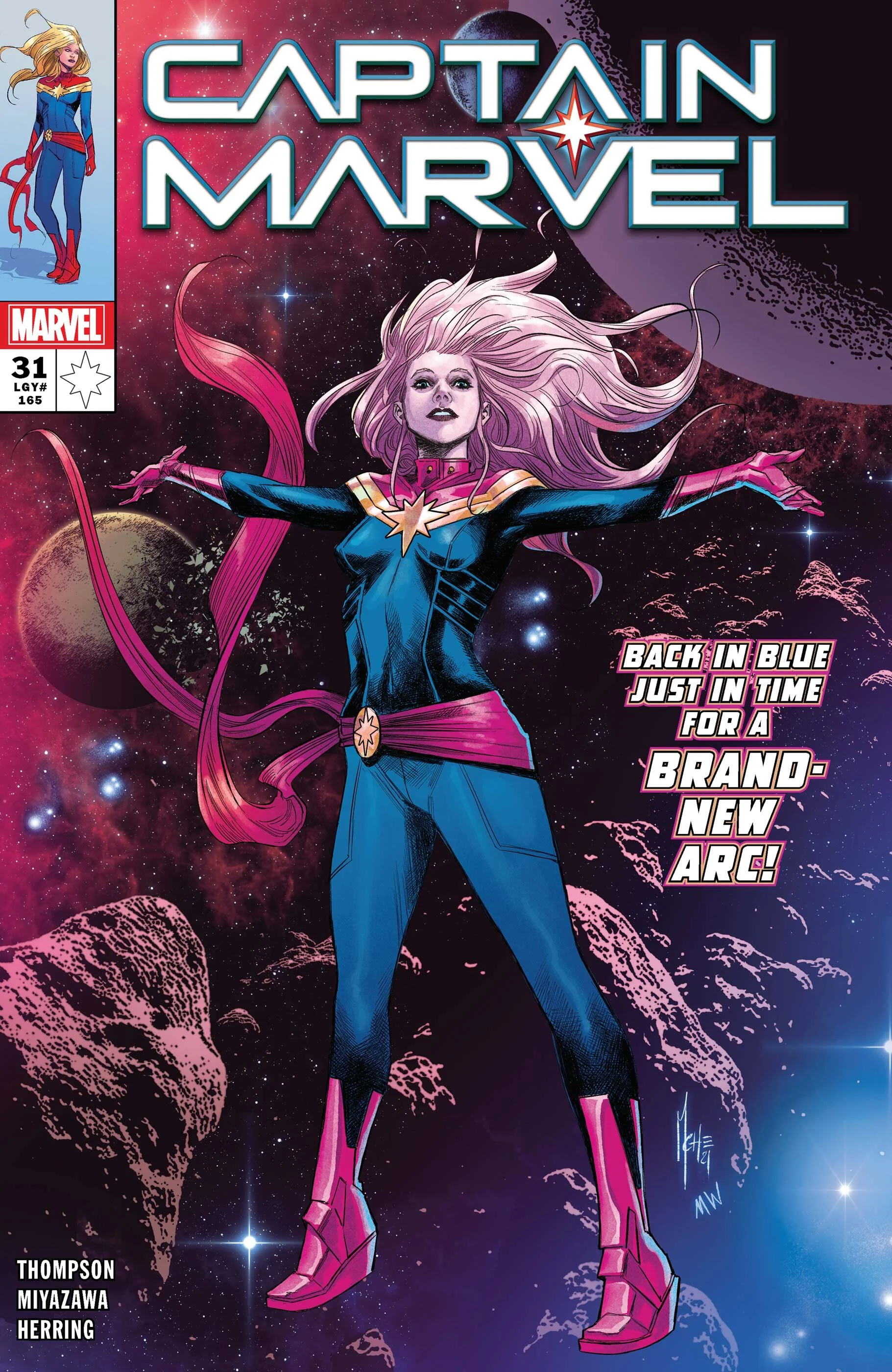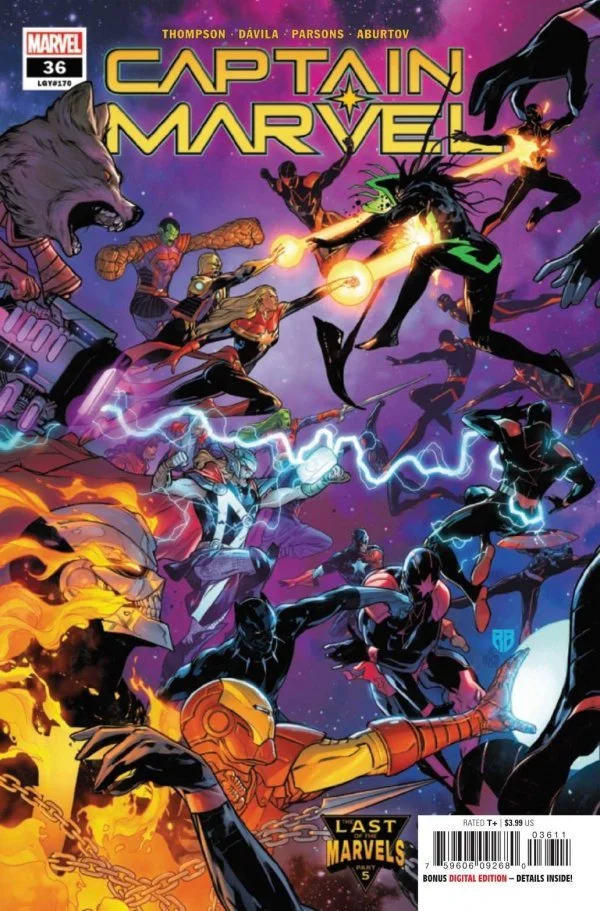Captain Marvel #31 // Review
Captain Marvel #31 is written by Kelly Thompson, drawn by Takeshi Miyazawa, colored by Ian Herring, and lettered by VC’s Clayton Cowles. Picking up after the events of Captain Marvel’s ill-fated alliance with Enchantress, Captain Marvel #31 acts as a bridge between arcs, as the next arc, The Last of the Marvels, begins in Captain Marvel #32.
Even superheroes need vacations, and after being dragged to hell and back, Carol needs one more than ever. Plus, it will be a good way for her and Rhodey to reconnect now that they’re back together (see Captain Marvel #30). That’s right, folks, they’re happily back together.
Unfortunately, their vacation plans need to be put on hold when Lauri-Ell, Carol’s half-sister, shows up on their plane asking for help. Beach vacation, a trip across space to Throneworld II (home of the Kree/Skull Alliance), basically the same thing. Not really, but they are sort of going on vacation with each other, right? Sometimes you just have to take what you can get.
The news on Throneworld II is concerning; the DNA of Kree heroes, including some of the DNA of Carol and Lauri-Ell’s mother, has been stolen. Stolen by the “The Sludge”- a microorganism the Kree designed to eat waste from the lab. Okay, not the scariest threat they’ve all faced, but concerning nonetheless. And what does it want with that Kree DNA?
Thompson’s choice to have Captain Marvel, War Machine, and Lauri-Ell team-up was a fantastic one. Carol and Rhodey have a fun back-and-forth, and even Lauri-Ell picks up on their “charming banter,” as she calls it. And Lauri-Ell also has fun interactions with Carol and Rhodey. Their interactions through dialogue aren’t the only good part; they also make a hell of a fighting team. They’re like a well-oiled War machine. Sorry, couldn’t resist that one.
But in all seriousness, these three are capable fighters who quickly adapt to changing situations and can rethink their strategy on the fly. Here’s hoping that Thompson gives us more of these three teaming up in the future.
Working with multiple characters with vastly different powers fighting together allowed Miyazawa to showcase their different fighting styles. This adds to the visual interest of the story. Combined with Herring’s soft, smooth colors, the art is good. Good but not great.
Unfortunately, the details on characters, such as facial expressions, often appear faded or blurry. It’s easier to ignore when it’s occurring with background characters or in a large scene, but when it’s just the three main characters or the scene is relatively close up, it’s more noticeable. At times it feels like the art had to be shrunk to fit all of the dialogue bubbles in the panel. While this doesn’t ruin the reading experience, it’s worth mentioning because it is distracting.
This was a fun, relatively low-stakes mission. Well, sort of low-stakes. The Sludge was no match for the combined power of Captain Marvel, War Machine, and Lauri-Ell. Far easier than most villains they’ve faced. But in the superhero world, as in the real world, when things seem too good to be true, they usually are. It’s not actually low-stakes, the Sludge is no longer an active threat, but it also wasn’t the entire threat. Poor Carol, she’s going to find out that she can’t catch a break. As far as in-between arc stories go, Captain Marvel #31 was a great one; It got me hyped up The Last of the Marvels without feeling like this story was filler.









